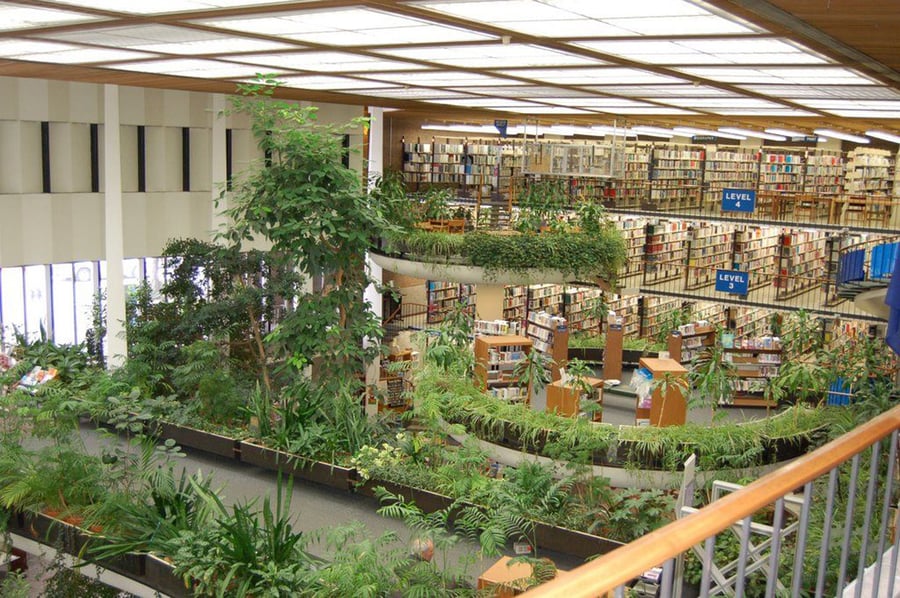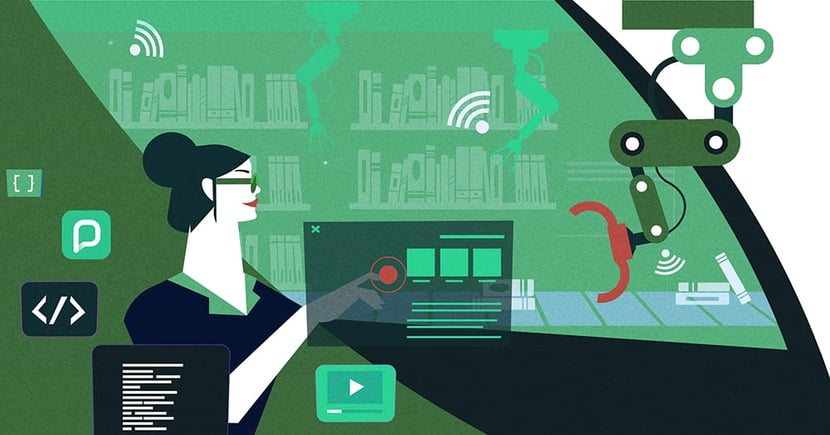There’s no arguing that we all need to do more to protect our planet and promote environmental sustainability practices. We’re not just talking about individuals; institutions and companies all have a responsibility to create sustainable initiatives and reduce the damage on our planet so that it can continue to be a safe place for future generations.
While many organizations are still figuring out their sustainability goals, public libraries are ahead of the curve. Whether it’s hiring environmentalists in residence, pursuing their LEED certification or reducing their carbon footprint by embracing digital resources, libraries showcase many examples of environmentally friendly practices.
In recent articles, we talked about the role public libraries play in community health and wellbeing and how they can support media literacy in an age of misinformation. Here, thanks to our unique access to libraries around the world, we’re taking a deep dive into the important work they do to drive sustainability in their communities — sustainability is about more than going green, after all.
See also:
Sustainability as a core value
The American Library Association adopted sustainability as a core value of librarianship in 2019, noting that this consists of practices that are environmentally sound, economically feasible and socially equitable: “Libraries play an important and unique role in promoting community awareness about resilience, climate change and a sustainable future. They are also leading by example by taking steps to reduce their environmental footprint.” In 2021, the library association resolved to pursue a goal of carbon neutrality for all of its in-person conferences by the year 2025.
A sustainable operating model
Libraries have been around for centuries, and so has their model for loaning and sharing access to resources. This approach is arguably one of the earliest recorded means for reducing and reusing materials. Instead of having multiple people buy individual copies of a book or magazine, libraries offer a sustainable alternative where communities can share access to the same resources. In addition, a communal appreciation and respect for libraries ensures that patrons take good care of the books they do borrow, extending the lifetime of a given book.
Given the sustainable model that operates at their core, it’s no surprise that libraries are constantly finding new ways to replicate this system. For example, some libraries are expanding the list of things their community members can borrow from their branches. From toys and plant seeds to musical instruments and new technologies, patrons are able to reduce the number of items they buy and dispose of.
Case in point:
The Wellesley Free Library’s Library of Things has an expansive list of items members can sign out, including crochet hooks, sewing machines, white noise machines, gaming consoles, e-readers and bird-watching kits.
The library offers hundreds of different items on lend spanning 20 categories
COVID-19 initially put a dent in some of these programs, due to public concerns around sharing physical items and picking them up in person. However, just like with book loans and access to other resources, many libraries pivoted and found new ways to offer these programs as part of their phased reopenings. As we continue to move past the global pandemic, we’re excited to see how these efforts evolve in the years ahead.
A home for sustainable programs
Beyond their operating model, libraries have a number of other opportunities for the research and development of environmentally sustainable practices. One key area to address is the disposal of unwanted books. As more and more books are published, library staff need to constantly make decisions around which resources to keep and feature within their limited spaces — but throwing the unwanted books out is not the answer.
The Sustainable Shelves Program offers a welcome alternative. Run by Baker & Taylor and collectionHQ, this initiative uses a logistics vendor to give libraries around the world the chance to sell books that are weeded or taken out of circulation. The logistics company then picks up the books, assesses their value and classifies them for resale or recycling, and credits the library accordingly.
Meanwhile, The Sustainability Project was created to mitigate the impact of the 4.5 million books that are sent to landfills from Australian libraries every year. So far, the program has saved over 225,000 books. Participating in green programs of this kind is a win-win for libraries. They’re able to reduce their waste while also avoiding the costs of paying third-party refuse companies from collecting their unwanted materials.
Green from the inside out
Even as they start adopting more digital programs and tools, libraries are still largely anchored in physical locations and branches. Given this extensive real estate presence, library leaders have an opportunity to employ sustainability principles when designing and refurbishing their buildings — and they haven’t been afraid to take it.
In fact, we’re in awe of the sheer number of environmentally friendly design ideas being incorporated into libraries. Whereas some green libraries live in energy-efficient buildings with LED lights and solar panels that help them cut energy costs, others are implementing green building policies that guide the decisions they make around purchasing, housekeeping and waste management. Other sustainable libraries have used the trees removed for construction to build furniture and have designed green roofs to reduce rainwater runoff and add a greenscape for their community.

Case in point:
Singapore’s National Library uses bioclimatic design techniques to help librarians manage daytime temperatures and reduce energy waste. To do this, over 120 species of tropical plants have been landscaped in 14 different gardens to help keep the building cool.
The building saved as much as 31% of energy compared to non-green buildings of its size .
A space to educate and empower patrons
One of the wonderful things about the worldwide network of over 408,000 public libraries is that these institutions have a unique blend of global reach and in-depth knowledge of the communities they serve. In other words, libraries have access to lots of information about environmental issues, and can then make that information more accessible for their patrons.
There are many ways that this is being done, including education events on and around Earth Day, promoting environmental collections within the library, and opening the door for climate change activists to gather and host workshops on-site.
Case in point:
In 2018, the Toronto Public Library hosted their first Environmentalist in Residence. During her tenure, environmentalist Jannelle Richards offered her expertise on conservation and sustainability at TPL’s Albion Branch and Scarborough Civic Centre Branch.
Toronto Public Library has now had five environmentalists in residence, with Corals and Bees cofounder Shamily Shanmuganathan currently holding the post
The Environmentalist in Residence program offers programs, workshops and community consultations as part of the library’s Our Fragile Planet program series
The great thing about all this work that’s being done is that libraries are getting recognized for their green efforts. The International Federation of Library Associations and Institutions’ Environmental Sustainability and Libraries Section was first launched to empower librarians to inspire their communities to encourage sustainability initiatives. Now, the group is also awarding libraries for their success towards this goal. In 2022, Singapore’s National Library Board was recognized for its green revamp of Choa Chu Kang Public Library, and Paris’s Médiathèque de la Canopée-la fontaine got a nod for its sustainable-library pilot project.

The growing role of technology
Something pretty magical happens when a library is able to help both the environment and their members at the same time. Like many other organizations, libraries have had to keep pace with the growing desire for quick and seamless digital interactions. This has resulted in the digitalization of some offerings, and the adoption of new technology to expand libraries’ reach beyond the branch walls.
At the same time, opting for these technological solutions goes a long way towards reducing a library’s environmental footprint. With PressReader, for instance, libraries can give their members access to over 7,000 newspapers and magazines from around the world, without having to ship paper copies to their branch. The bonus? It allows libraries to partner with publications in collectively reducing the environmental impact of sharing well-researched and trustworthy information. This way, media literacy can be developed without impacting the environment.
As long as the community of libraries continues to acknowledge and collaborate with each other, we’re bound to see so many more examples of how these valuable institutions foster sustainability both locally and globally. We can’t wait to see where it takes us.









